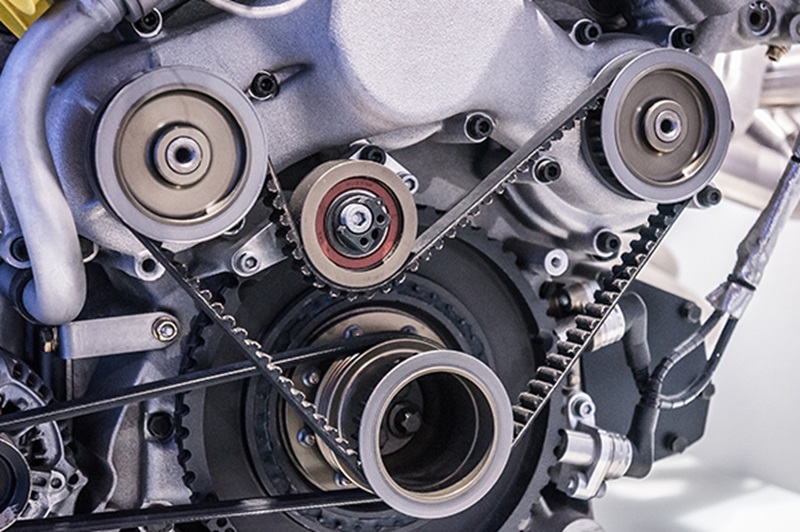
V-Belts to Carry ISI Mark from September 2024: DPIIT
Welcome to our guide on V-belts and the significance of the ISI Mark
In the vast machinery of our modern world, where gears turn, engines whiz and production lines growl, there is a vital component that helps in smooth operations: the V-belt.
Often ignored but essential, V-belts quietly facilitate the transfer of power between rotating shafts, enabling the smooth operation of countless industrial processes and mechanical systems.
From factories to farms, automobiles to appliances, V-belts play a crucial role in keeping the wheels of progress turning.
But what exactly are V-belts, and why government issued a quality control order for them?
In this article, we are going to explain everything you need to know about V-belts and explore the significance of the ISI Mark and the directive issued.
Let’s begin with understanding what are V-belts.
What are V-belts?

V-belts are a type of flexible belt used to transmit power between two rotating shafts.
They are called “V-belts” due to their trapezoidal cross-section, which fits into corresponding V-shaped grooves on pulleys.
These belts are commonly made of rubber or synthetic materials and are used in various industrial applications, including machinery, automobiles, and agricultural equipment.
V-belts are designed to handle high levels of tension and provide reliable power transmission.
However, their importance exceeds mechanical function – V-belts are integral components in critical systems where any malfunction can lead to consequences, potentially resulting in significant loss of life or property damage.
Recognizing the importance of promoting quality and safety in these vital components, the government has issued a Quality Control Order (QCO).
But do you know what exactly a Quality Control Order is? Let’s understand it first before knowing about the directive issued by the government.
What is a Quality Control Order (QCO)?

A Quality Control Order (QCO) is a regulatory measure implemented by government bodies to ensure that specific products meet certain quality standards and safety requirements.
These orders are aimed at protecting consumers from substandard or unsafe products and promoting quality manufacturing practices within industries.
Moreover, QCOs typically outline mandatory specifications, testing procedures, and certification requirements for designated products.
Significance of ISI Mark
The ISI Mark, issued by the Bureau of Indian Standards (BIS), is a certification mark that indicates a product conforms to Indian quality standards and safety regulations.
Products bearing the ISI Mark have undergone rigorous testing and evaluation to ensure compliance with established benchmarks for performance, durability, and safety.
So, for consumers, the ISI Mark serves as a hallmark for quality, assuring that the item meets specified standards and is safe for use.
Understanding Quality Control Order for V-Belt

The recent Quality Control Order (QCO) issued by the Department for Promotion of Industry and Internal Trade (DPIIT) mandates the ISI Mark for certain categories of V-belts used in industrial applications.
This order sets forth specific requirements for Endless V-belts for Industrial Purposes, including general-purpose belts, fire-resistant, and antistatic variants, as well as narrow V-belts for transmission devices.
Effective from September 2024, this regulation aims to enhance consumer safety and promote the use of quality V-belts in industrial settings.
Whereas implementation dates for small and micro enterprises are different which are as follows
- Small enterprises are given nine months to comply, which means they will be affected by this directive in December 2024.
- Micro enterprises are given twelve months to comply, which means they will be affected by this directive in March 2025.
The Bureau of Indian Standards is responsible for certifying and enforcing the items listed in the table.
| Goods or Articles | Indian Standards | Title of Indian Standard |
| V – Belts | 2494 (Part 1):1994 | V-Belts – Endless V-Belts for Industrial Purposes – General Purpose |
| 2494 (Part 2):1993 | V-Belts – Endless V-Belts for Industrial Purposes – fire resistant and antistatic V-Belts | |
| 14261:1995 | Transmission Devices – V – Belts endless narrow V-Belts for industrial use |
You can access the official notification issued by DPIIT from here.
Why ISI Mark made mandatory for V-belts?
The mandatory requirement of the ISI Mark for V-belts is driven by the need to ensure product quality, reliability, and safety.
Manufacturers demonstrate their commitment to producing V-belts that meet stringent quality criteria by adhering to established standards and obtaining ISI certification.
This measure also helps prevent the circulation of substandard or fake products in the market, safeguarding consumers from potential risks associated with inferior V-belts.
Vincular – Your Trusted Partner for ISI Certification

For manufacturers seeking ISI certification for their V-belts, Vincular – India’s best regulatory compliance company offers comprehensive assistance throughout the certification process.
With expertise in regulatory compliance and quality assurance, Vincular helps manufacturers navigate the requirements of the QCO and obtain the ISI Mark for their products.
So, by partnering with Vincular, manufacturers can streamline the certification process, ensure compliance with regulatory mandates, and gain access to markets with confidence.
Not just ISI Certification, Vincular offers services in various industries and can help you in getting BEE Certification, TEC Approval, WPC Approval, CDSCO Approval, PESO Certification, FSSAI Approval and much more.
Note – To keep up with the market and know about the latest regulations and notifications watch our Publication or subscribe to our WhatsApp channel.